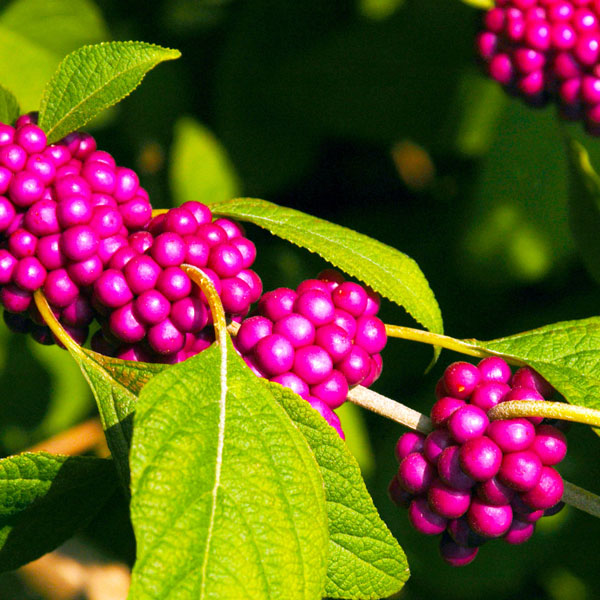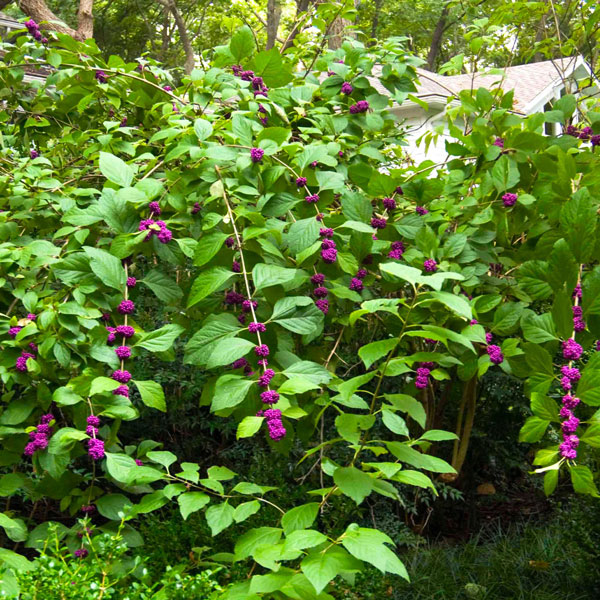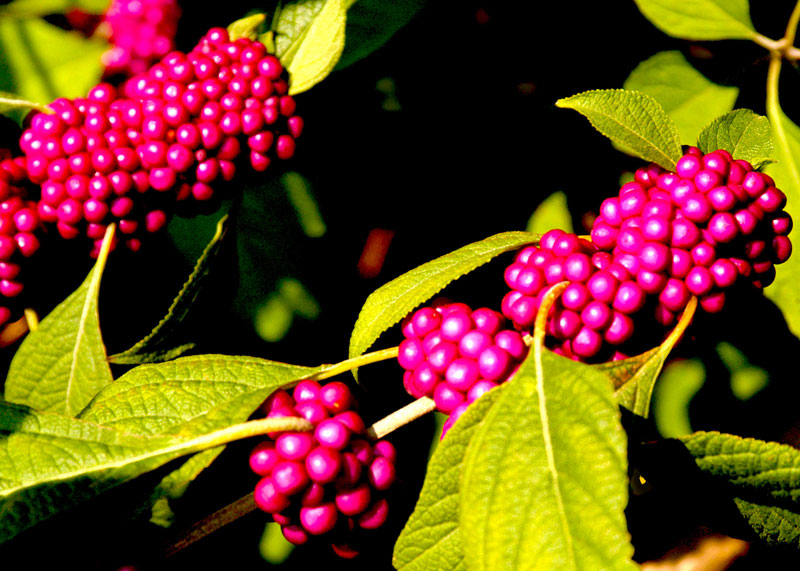American beautyberry shines in fall garden

Growing up around Aggieland, I just assumed all plants had berries this color. Dad was in the Range and Forestry Department, and he and I would go out to their forestry research area by Easterwood Airport in the fall. The post oak forests would be filled with American beautyberries loaded with these jewel-like fruit.
That was decades ago. You’d think the plant would have gained a lot more momentum by now. It’s not unheard of, but it’s certainly not mainstream. We ought to change that. I’m willing if you are.

The facts you’ll want to know…
Scientific name: Callicarpa Americana
Common name: American beautyberry
Plant Family: Lamiaceae
Mature size: 4-6 ft. tall and wide
Native Range: Southeastern U.S., Northern Mexico, Bermuda, Cuba, the Bahamas and other islands of the West Indies.
U.S.D.A. Hardiness Zones: 6-12, meaning it should do well in almost all of Texas.
Flower Color: Insignificant

Fruit color: Iridescent maroon. Creamy white (much less showy) also available). Fruit matures in mid-fall. Popular with birds.
Foliage: Large, dark green, mulberry-like leaves on loose, open branching. Deciduous. May benefit from trimming in winter to maintain compact growth form.
Site preference: Morning sun, afternoon shade. Plant in highly organic, consistently moist garden soil – no plant suffers more visibly when dry.
